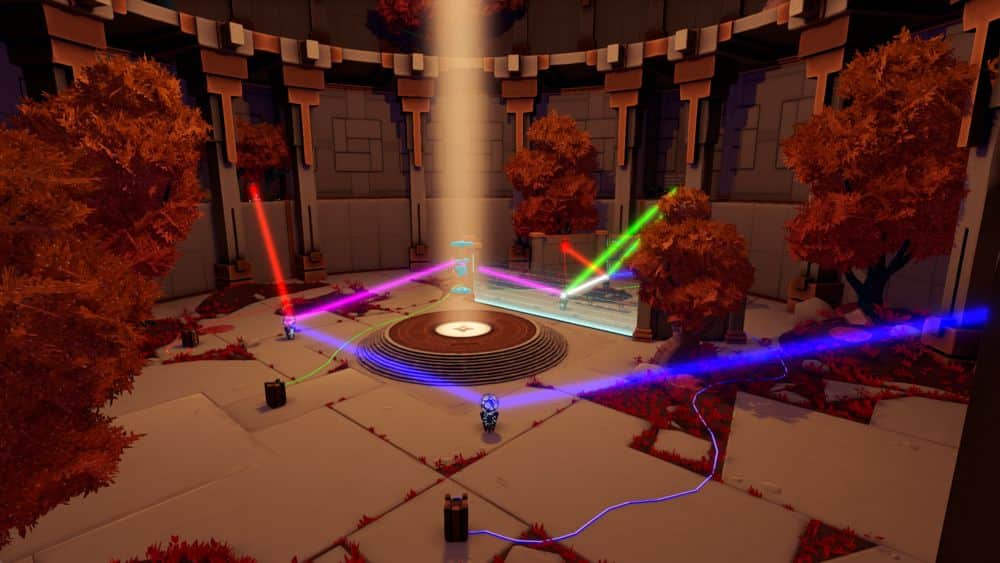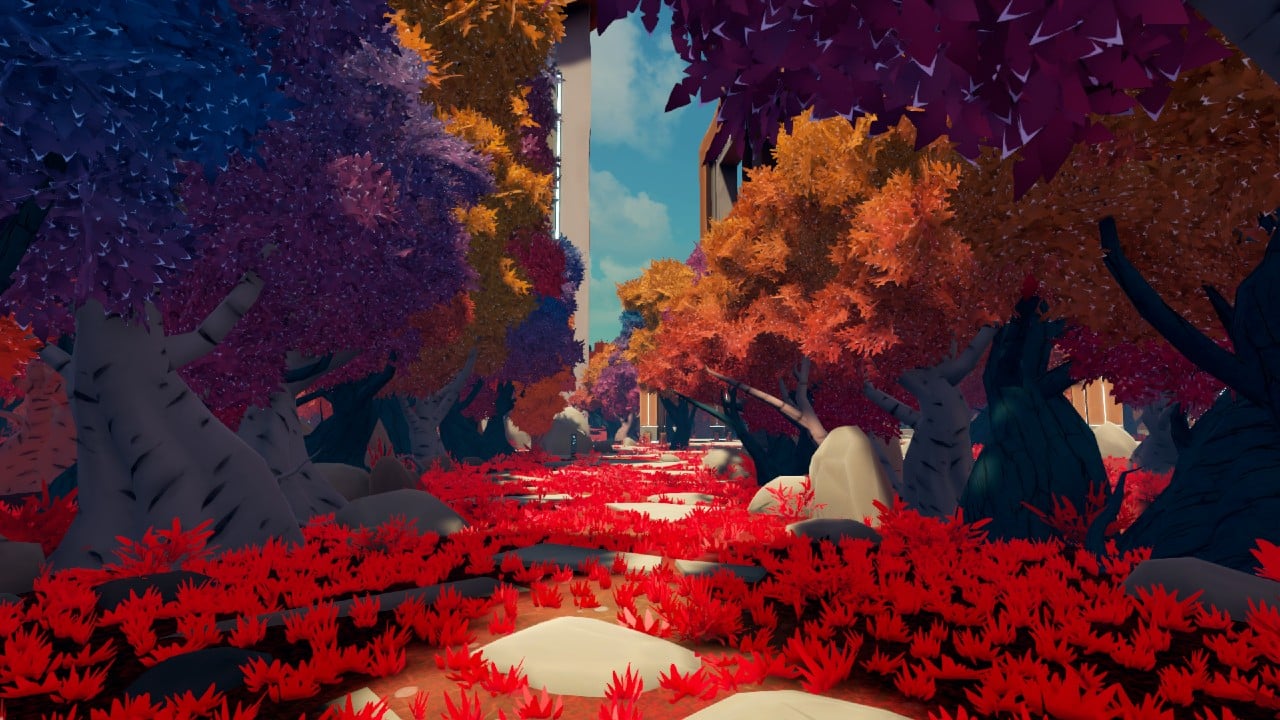Hostlight, which we see in this review, is an independent game developed by ESPID_GAMES and distributed by the Spanish Selecta Play. It is about a puzzle game based on a play of lights and colors with very interesting mechanics albeit not extraordinarily innovative. However, these mechanics find a great place within very suggestive levels.
The Hostlight review
Hostlight is a puzzle game that rests its foundation on simple, almost intuitive mechanics, which however become progressively more complicated as the game progresses. The core is very simple: we have gods beams of light that, through a system of prisms, filters and mirrors, are broken down and recombined in the various colors of the visual spectrum. The goal is to get the light of the right color to its destination from time to time.
At the beginning of the game we start in a forest without having a real context. We are led by a small robot, who calls himself “the Guide”, through the basic mechanics. We are simply told that we have to solve puzzles to get from one room to another and find out what happened.
History is not the preponderant element of the game e we discover it as we solve the various levels. Be that as it may, the narrative it is not thrown at us but rather gradually suggested through the dialogues between the NPCs and other clues. The topics covered are interesting (it’s hard not to spoil, so we’ll just say this) so it wouldn’t have been bad to make everything a little more incisive. Nonetheless, the narrative has pleasantly struck us.
Il graphic sector is absolutely of a high level and it is the first thing that strikes us. The rooms are well cared for in terms of detail. The graphics, although not realistic, make the spaces extremely suggestive. To this is added a very nice sound that makes the experience very immersive; however, the background base could benefit from a little more variety.
The game mechanics

As already mentioned, the game mechanics are in essence quite intuitive. In each room there are light beam generators, which at times can be operated and oriented by us and at other times they are fixed. Inside each room there will be available mirrors to change the light path, prisms to break down and recombine the various colors e filters to block chromatic components.
The solution of each level consists in deliver a beam of light of the right color to specific collection points. When a collection point is properly lit, an artifact is released to be placed in the center of the room. Each room has a variable number of artifacts to unlock.
Once all the artifacts are in the center of the room, under a beam of light, you need to orient them to match their shadow with a shape on the floor. At that point, let’s move on to the next level.
Il level design
Despite the absolutely suggestive settings, on the level design part we remained honestly a little perplexed.
First, the two solving steps of each layer – colored lights and shadow alignment – have little correlation to each other. They are two completely distinct activities that it is difficult to understand why they must be the continuation of each other. Furthermore, the first phase can represent an interesting obstacle conceptual while the second is always rather linear and repetitive.
The other thing that took us a little off guard on level design is the difficulty trend. The first few levels are honestly very simple, to the point of leading us to think that the game will not really offer much resistance. After a while, however, you bump into a step and from there the difficulty finally begins to climb more significantly.
Therefore, don’t worry if the first few levels seem too simple. At some point you will find the real challenge.
The color system
The system used for the colors and their composition is the aspect on which, in the editorial office, we have debated the most.
 The RGB model
The RGB model
Without wishing to get too technical, there are two ways of combining colors: a subtractive and an additive mode.
The first it is the one used in art schools and to which we are instinctively accustomed since we used crayons as children. For most of us it goes without saying that overlapping yellow and blue results in the color green. This is how it is done in art schools, but physics is a different thing.
The additive mode, on the other hand, consider the physical characteristics of light. This means the primary colors can be red green and blue and yellow, for example, is the overlap of red and green.
Hostlight designers decided to use the second mode. Mind you, we don’t consider it a mistake. Those who deal with professional graphics already know this and with a little practice it becomes clear to everyone. Furthermore, allows you to manage white light in a more likely way. However, the non-intuitiveness in the combination of colors for many players could lead them, at least in the first levels, to check the RGB model diagram continuouslymaking it decidedly the use of the game is discontinuous.
The Hostlight review at a glance
Hostlight, which we have seen in this review, it is definitely an interesting game and that, if you are a puzzle game enthusiast, it can be a good addition to your library. The game is very relaxing without giving up a demanding challenge. The visuals are stunning as well as the sound very well maintained albeit with a somewhat repetitive background. While there are a couple of design flaws in our opinion, Hostlight can deliver a few hours of good quality entertainment.
PRO
- Quite challenging puzzles
- Fantastic views
- Good audio sector
VERSUS
- Non-intuitive color scheme for everyone
- Difficulty curve a bit irregular













Leave a Reply
View Comments